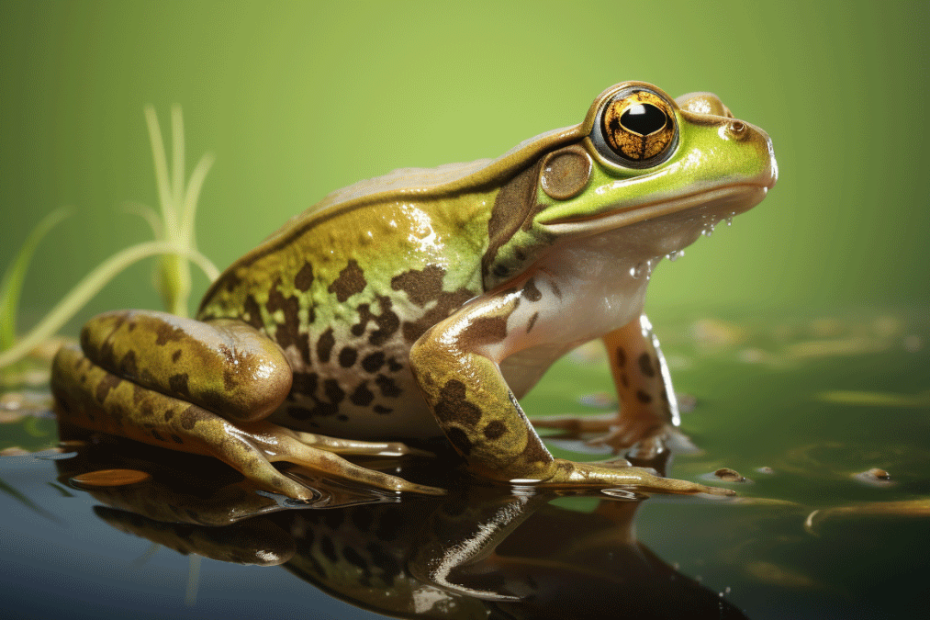Frogs are considered one of the toughest animals to fight for survival. Hibernating in adverse weather and surviving without food are two of their exclusive traits. These omnivorous creatures can conserve energy by reducing their metabolic rate and staying long without food.
So, how long can frogs and toads go without food? Frogs and toads can go almost 3 to 4 weeks without food. But juvenile grogs can’t go that long. They can survive around up to 3 days.
The duration of frogs’ survival without food cannot be answered so directly as it depends on several factors. To learn more about the deciding factors and to get detailed explanations, follow the segments below.
How Many Days Can Frogs and Toads Survive Without Having Food? All You Need to Know
Frogs, unlike any other animal, can live for weeks without food. You will be amazed to know a healthy adult frog can survive up to 3 to 4 weeks without food. An average healthy frog can survive up to 2 weeks.
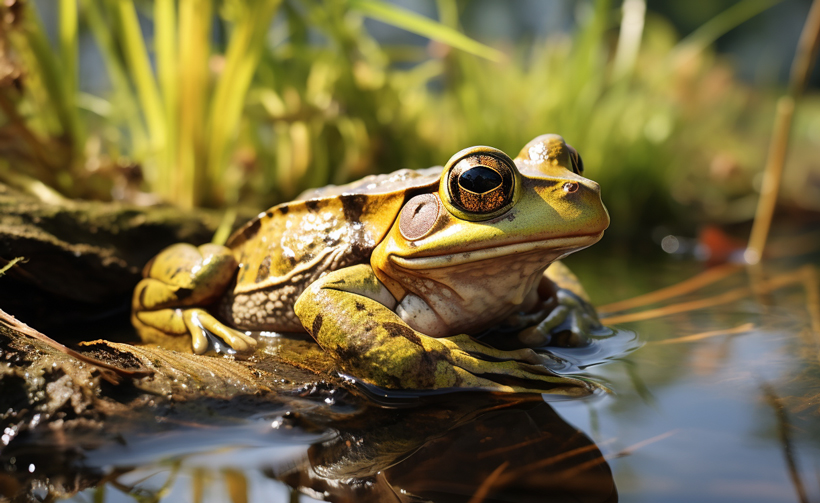
Juveniles and tadpoles can go a few days without food due to their metamorphic growth needs. In the early stages of a frog, it can go up to 3 days without food. And even during hibernating, frogs can survive without feeding for years.
The survival duration actually increases as the frogs mature. A mature and healthy frog of 2 to 4 years will require the least energy. As they are already developed and do not need energy for any sort of organ development.
A frog is developed with a fascinating physiology that allows them to fluctuate their energy consumption and metabolic rate. Though they are massive eaters; they keep on eating as long as the prey is in front of them. At the same time, they can go for years without feeding.
Here is a chart showing the possible survival duration of frogs in different life stages without food.
| Life Stage | Age | Healthy Frogs (well Fed) | Average Health Frogs |
|---|---|---|---|
| Tadpoles | 14 to 16 weeks | 2 days | 1-day |
| Juvenile Frogs/ froglets | 20 to 25 weeks | 3 days | 1 to 2 days |
| Adult frogs | 2 to 4 years | 3 to 4 weeks | 1 to 2 weeks |
[Note: Before moving forward, we need to understand if frogs and toads are different from each other and whether they have different diets or not. To be precise, toads are the subclassification of frogs, which means all toads are basically frogs. Thus, the factors explained in the content apply to both frogs and toads.]
Factors that Determine How Long Can Frogs and Toads Continue Without Eating
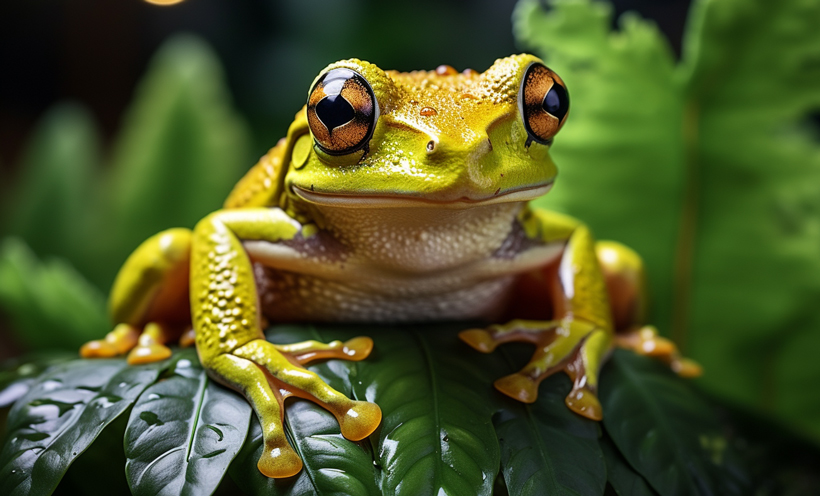
Also, the food needed depends on different aspects: whether the frogs are healthy or not, the surrounding environment, age, and so on.
- Overall Health: A healthy frog will certainly last longer without food than an unhealthy frog. If a frog is injured or suffering from any particular disease, it will need energy and strength to regain its health.
As stated earlier, a well-fed healthy frog can survive up to 2 weeks without being fed. An unhealthy frog with health issues and in a poor environment will not last more than a week.
The exact survival time of a sick frog without food will depend on the type of sickness it is suffering from.
Food being the only energy source, an unhealthy frog will require more food for healing. Therefore, surviving periods during food deprivation will be cut short for them.
- Age: Tadpoles usually survive for a shorter period without food. As they are in the developing stage and need more food than adult frogs, without being fed, they survive for less time than adult frogs.
Tadpoles can survive the highest 2 days if they are well nourished, and in the average state, they can go for a day without feeding.
- Species: Different frog species have their survival duration; some may live for years without food, and some may go only for a few weeks. One species of burrow frog is reported to survive years without food. Green-striped frogs can survive almost 10 months in hibernating state without consuming any food.
- Habitat Environment: The most significant factor is habitat environment. A frog in a clean and suitable habitat can survive longer without food. But in any extreme environment situation, surviving without food ( if the frog is not hibernating) becomes very difficult.
How Do Frogs Survive Without Food For So Long?
Frogs surviving without food for so long without any issues has been a fascination with science. Much research has been conducted on the physical mechanisms of frogs that allow them to survive so long without food. Here, we have listed the reasons behind frogs’ prolonged survival without being fed.

Mitochondrial Coupling- Efficient Energy Usage
Frog cells change drastically during food deprivation, maximizing their use of energy resources. Even the operative power of the mitochondrial cells of frogs was found to be more active during the dormancy period than during the active eating period.
It is often called the “mitochondrial coupling,” which allows the frog to use the energy from limited energy storage efficiently.
Ability to Fluctuate the Metabolic Rate
Frogs can lower their metabolic rate to conserve energy. During hibernation or aestivation, they become hypoxic (tend to live in places with lower oxygen levels). Low oxygen intake makes them able to lower their metabolic rate.
According to research, frogs exposed to lower oxygen intake can increase almost 30% of their metabolism. And they survive longer without food than any other animals.
Less Heat Consumption by the Organs
Frogs are cold-blooded animals; they do not have to generate heat in their body to keep the organs fine. Their body adapts to the outside temperature. Therefore, they do not have to spend extra energy to adjust to the weather.
Thus, they need less food consumption and can stay alive without food intake.
What and How Often to Feed Frogs? A Complete Diet Chart
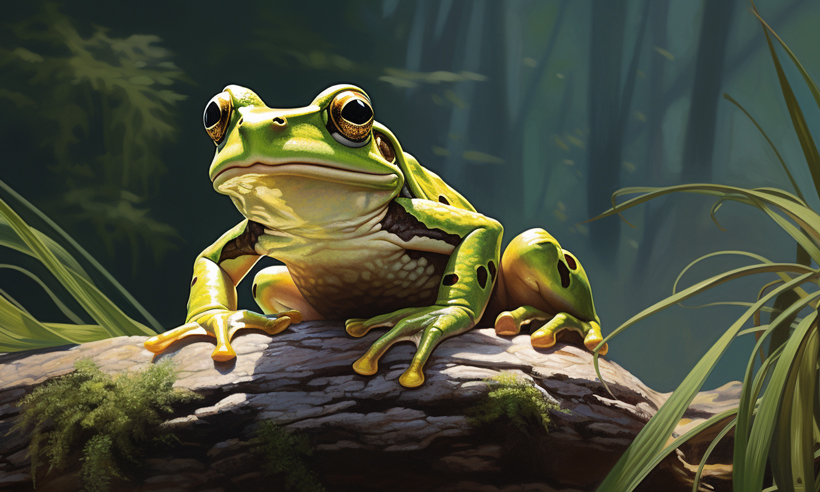
A frog’s diet is based entirely on its life stages. We have attached a table based on research by the National Research Council (US) Subcommittee on Amphibian Standards.
Washington (DC) contains the appropriate diet of a frog according to its life stages.
| Stages | What to Feed | When to Feed | What Not to Feed | |
| Tadpoles | Larva (initial Stage) | Wilted lettuce (softened in a pressure cooker) | 2 times a day | Spinach: It can cause kidney stones |
| Large Tadpoles | Wilted lettuce, algae, rabbit chow, dry dog food, protein supplement, etc. | |||
| Adult Frogs/ Large Adult Frogs | Mealworms, crickets, cockroaches, mosquitoes, pinky mice, tadpoles, fish, etc. | Two to three times a week: | ||
Can Frogs and Toads Survive Without Water?
One of the most significant differences between frogs and toads is their need for water. Frogs need to keep their skin moist and lay eggs in clean water, thus remaining close to the water. On the other hand, toads do not need water to keep their skin moist and travel far from water.
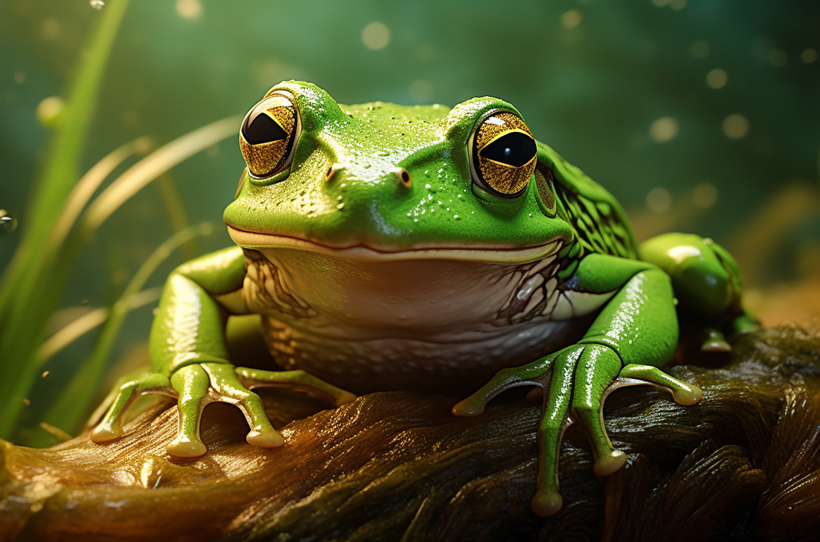
Amphibians opt for secondary drinking to rehydrate their bodies, which means they absorb water through their permeable skin.
Frogs may need water more frequently than toads, but toads also cannot survive without water.
While understanding the endurance of frogs without food can be intriguing, it’s also essential to consider the environments where they often find themselves and their unique dietary choices. For instance, it’s not uncommon to discover frogs in pools, an environment that might pose both challenges and opportunities for these amphibians. Moreover, when it comes to their diet, frogs can sometimes surprise us with their choices. Would you believe that some frogs might even consider snakes as prey? Delve into the captivating world of frog diets with our article on whether frogs eat snakes to get a clearer perspective.Related Questions
So far, you have read about how long frogs and toads can go without food and their survival mechanisms. Yet, there might be a few questions you will have in your mind. The segments discuss a few of the FAQs.
Frogs are voracious eaters and keep eating without considering their energy requirements. They may keep eating the prey as long as they are moving and are available. This Overfeeding tendency can cause obesity in frogs.
Though frogs are carnivorous animals and live on insects, one species is found to eat fruits. The tree frog (Xenohyla truncata) is found eating the pulp of bulbous trees in Rio de Janeiro.
Frogs can survive without food while hibernating for years. Yet if you have a pet frog or a frog captive, they will not partake in daily activity due to starvation. And prolonged starvation will result in death as well.
Conclusion
Frogs and toads can go months without food. But the duration depends on certain factors- overall health condition, surrounding environment, species, etc., to name a few. They may even go for years without feeding during hibernating, but prolonged starvation can be lethal.

Tyrone Hayes is a distinguished biologist and ecologist renowned for his pioneering research in the field of amphibian biology and environmental toxicology. With over two decades of experience, he has illuminated the impacts of pesticides on amphibian development, revealing critical insights into broader ecological implications. Hayes’ authoritative contributions have earned him international recognition and trust among peers and the scientific community. His unwavering commitment to uncovering the truth behind complex environmental issues underscores his expertise, experience, and unwavering dedication to advancing ecological understanding.
